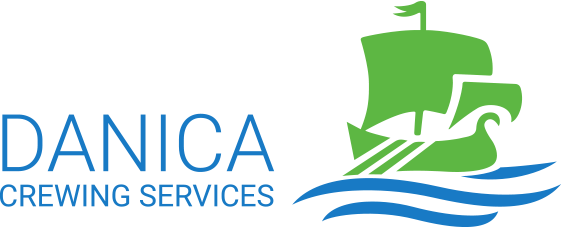Crews from around the world
Danica Crewing Specialists is able to supply your ships with a range of competent crew of many different nationalities.
Here is some information to help you decide who best suits your needs.
Ukraine fact sheet

General
Ukraine is a country in Eastern Europe. At 603,628 sq km, it is the second-largest European stretching from Russia in the east to Poland in the west, with the Black Sea running along its southern border.
Capital
Kyiv
Population
43.7 Million
Currency
Ukrainian Hryvnia [Gryna]. 1 USD = 36 Hryvnia (February 2023)
Language
Ukrainian (some regions can also speak in Russian)
Seafaring history and traditions
“Ukraine is geographically central in Europe. It has a northern coastline on the Black Sea and in the south east borders the Sea of Azov, while the Dnipro River – one of the biggest European rivers –flows through the centre. As a result, Ukraine has strong maritime traditions stretching from the Kievan Rus period to modern time.
On May 16, 1833, the Black Sea Shipping Company was established, which operated vessels between Odesa and Istanbul. The shipbuilding and repair works were mostly performed in the Mykolaiv and Kherson shipyards.
Today Ukraine is among the top five countries which supply qualified personnel to the international maritime labour market. This is due particularly to the high-quality and modern education. There are some 16 educational maritime institutions of various levels of accreditation available in Ukraine. Of these, the two major ones are the National University, “Odesa Maritime Academy”, (established in 1944) and the Kherson State Maritime Academy (est in 1834). Both educational institutions not only provide a high level of training, but also honour the strong maritime traditions of Ukraine.”
Number of officers
47,058
Number of ratings
29,383
Vessel types (on which the seafarers have experience)
All types of vessels (Merchant and Offshore fleet)
Key maritime cities / Seafarer hubs
Odesa, Kherson, Mariupol, Mykolaiv
Key maritime education and training centres
“National University “Odesa Maritime Academy”
Kherson State Maritime Academy”
Danica Office
Danica Crewing Services Ltd., 2A Shevchenko Avenue, office 202,
65044 Odesa, Ukraine
Georgia fact sheet

General
Georgia is a transcontinental country at the intersection of Eastern Europe and Western Asia. It is part of the Caucasus region. The country covers an area of 69700 square kilometres.
Capital
Tbilisi
Population
36.9 million
Currency
Georgian Lari (Gel) 1 usd = 2.64 Gel (February 2023)
Language
Georgian
Seafaring history and traditions
“Historically, Georgia is a maritime state of the Mediterranean and Black Sea basins, due to its geographical features and the role of its international relations.
On January 20, 1967, the foundation of the Georgian Shipping Company was laid. The headquarters of the shipping company were housed in Batumi and the key base of the company was its fleet. Following the collapse of the Soviet Union, Georgia established ocean fishing farms in Poti and Sokhumi, and, most importantly, Georgia’s shipping company which included about 60 different types of vessels including tankers and cruise ships.
Georgian Maritime education takes its roots in Poti Maritime Class founded in 1860. Batumi Naval College was established in 1921 (BSMA) and it became the member of the International Association of Maritime Universities (IAMU) in 2006.”
Number of officers
6,468
Number of ratings
11,191
Vessel types (on which the seafarers have experience)
Oil Tankers, Chemical Tankers, Bulkers, Container Ships.
Key maritime cities / Seafarer hubs
Batumi
Key maritime education and training centres
Batumi State Maritime Academy, Batumi Navigation Teaching University
Danica Office
Danica Crewing Services – Georgia LLC – Stefane Zubalashvili str, N37.
India fact sheet

General
“India is part of the continent of Asia. It is the seventh largest country in the world and the largest democratic one.
Most of India forms a peninsula, which means it is surrounded by water on three sides. The world’s highest mountain range, the Himalayas, rises in the north, while the southeast is bordered by the Bay of Bengal and the southwest is bordered by the Arabian Sea.
India’s terrain varies widely, from the Thar Desert in the west to jungles in the northeast. A fertile area called the Ganges Plain covers much of northern India. This formation was created from soil that was deposited by rivers running from the Himalayas. In some places, this layer of silt is over 25,000 feet (7,620 meters) deep.”
Capital
Mumbai
Population
1.42 Billion
Currency
Indian Rupee (INR). 1 USD = 82 INR (February 2023)
Language
India is a land with a range of languages and cultural diversity. The Indian Constitution recognizes 22 different languages, although Hindi and English have been designated as the official languages.
Seafaring history and traditions
“The beginning of India’s maritime history dates back to 3000 BC. During this time, the inhabitants of the Indus Valley had maritime trade links with Mesopotamia. Excavation at Mohenjo-Daro and Harappa has revealed ample evidence that maritime activities flourished during this period.
The discovery of a dry-dock at Lothal (about 400 km Southwest of Ahmedabad) gives an insight into the knowledge of tides, winds and other nautical factors that existed during that period. The dry-dock at Lothal dates back to 2400 BC and is regarded as the first such facility anywhere in the world, equipped to berth and service ships.
A study of the country’s maritime history reveals that the Indian sub-continent exercised supremacy over the Indian Ocean from very early times up to the 13th century. Indians took to the sea for trade and commerce rather than for political ends. Thus, the period up to about 16th century witnessed peaceful sea-borne commerce and cultural and traditional exchange between countries.
When India gained independence in 1947 from the British Empire, Indian tonnage was only 192,000 tons with handful of captains and seafarers. Over the past 75 years India has grown to be a major maritime nation in terms of tonnage and seafarers.”
Number of officers
145,000
Number of ratings
85,000
Vessel types (on which the seafarers have experience)
All types, including Main Fleet and Offshore vessels
Key maritime cities / Seafarer hubs
Seafarers are spread all over the country, but the major cities are Mumbai, Delhi, Patna, Kolkata, Chennai, and Kochi.
Key maritime education and training centres
Indian Maritime University and there are many other private recognized centres spread all across India
Danica Office
C/O Energios Maritime Pvt. Ltd. A-401, Citi Point, Andheri-Kurla Road, Andheri – East, Mumbai – 400059, India
Philippines fact sheet

General
Capital
Metro Manila is the National Capital Region located on Luzon the largest island.
Population
114 million
Currency
Philippine Peso 1 Peso = 0.018 USD
Language
English and Tagalog
Seafaring history and traditions
“According to the Department of Migrant Workers (DMW), since 1987 the Philippines has been the world’s main supplier of sea-based workers, making the country the manning capital of the world. Around 229,000 Filipino workers are on board merchant shipping vessels around the world at any given time. Overall, Filipino sea-based workers comprise more than 25 percent of the 1.5 million mariners worldwide, making them the single biggest seafarer nationality bloc in the shipping industry.
It’s no surprise that Filipino seafarers have made a mark in the maritime industry. The nation itself is an archipelago, with local seafarers voyaging long before Spanish galleons traveled between Manila and Acapulco. However, the surge in the number of Filipino sea-based workers occurred during the oil crises in the 1970s when the world could no longer afford Western crews. The need for seafarers drew Filipinos from the underprivileged provinces of the Philippines to enroll in the local maritime schools.
Today the Philippines continues to be the primary source of sea-based workers in the global shipping and transport market, providing manpower for tankers and sea vessels from other countries around the world, most notably Denmark, Japan, the United States, Panama, Liberia, Cyprus, Bahamas, Jamaica, Greece, Malta, Singapore, Norway, and Germany.
Most major universities of the Philippines offer Maritime courses with the leading public school being the Government-funded Philippines Merchant Marine Academy. It also has its own training centre for further development of seafarers. There are between 20-35,000 maritime students completing their three-year course every year but only about 5,000 manage to find jobs on-board ships to continue their seafaring career. As these numbers reveal there is a huge supply of cadets available every year to be developed to officers and crew for any company willing to invest in cadetship training developing and building their pool of seafarers.”
Number of officers
81,090 merchant vessels
Number of ratings
171,303
Vessel types (on which the seafarers have experience)
All type of vessels including Cruise and Offshore
Key maritime cities / Seafarer hubs
Metro Manila, Luzon, Cebu, Iloilo, Mindanao
Key maritime education and training centres
Metro Manila Luzon, Cebu, Iloilo, Mindanao
Danica Office
tba
Türkiye fact sheet

Location
Transcontinental country bridging Europe and Asia; coasts on the Black Sea, Aegean, and Mediterranean
Area
783,562 km²
Population
~85.7 million (2025 est.)
Capital
Ankara
Currency
Turkish Lira (TRY)
Official language
Turkish
Seafaring workforce
~38,000 officers, ~96,000 ratings — total ~134,000 active seafarers (2025 est.) Source note: Figures for ~38,000 officers and ~96,000 ratings (around 134,000 active seafarers) are based on combined data from the Turkish Ministry of Transport and Infrastructure – Directorate General of Maritime Affairs, the Chamber of Shipping industry reports, and sector estimates for 2025.
Maritime education
STCW-compliant academies: Istanbul Technical University, Piri Reis University, Dokuz Eylül University, Karadeniz Technical University, Bandırma Onyedi Eylül University
Vessel types served
Bulk carriers, container ships, tankers (crude/product/chemical), LNG/LPG, Ro Ro/passenger, offshore support vessels, drillships
Deep sea drilling capabilities
National drillship fleet includes Fatih, Yavuz, Kanuni, Abdülhamid Han; seismic vessels: Oruç Reis, Barbaros Hayreddin Paşa
Other offshore assets
Diverse support fleet for exploration, subsea, and logistics operations
Key maritime cities
Istanbul, İzmir, Mersin, Trabzon, Samsun, Kocaeli
Maritime strengths
Strong shipbuilding/repair clusters, strategic straits (Bosphorus & Dardanelles), experienced multinational crews
Port and logistics
“From Çaka Bey’s first Turkish fleet in 1081 to the Ottoman naval dominance under Barbaros Hayreddin Paşa, Türkiye’s maritime identity was forged through shipbuilding, cartography, and decisive battles like Preveza (1538), which is commemorated as Navy Day. Centers such as Karamürsel, İzmit, Gallipoli, and the Imperial Istanbul Shipyard anchored early naval organization and propelled figures like Piri Reis, whose Kitab ı Bahriye mapped the Mediterranean’s currents, ports, and hazards for mariners.
The Ottoman maritime system evolved through the Derya Bey and Kapudan ı Derya eras into a modern naval ministry, sustaining campaigns from the Mediterranean to the Red Sea and Indian Ocean. Despite setbacks in the late empire period, the republic rebuilt maritime institutions, expanding naval education and shipyards. Today, this heritage is visible in Türkiye’s active merchant marine, shipbuilding clusters, and a national offshore exploration fleet that underscores a continuous seafaring tradition6.
Straddling critical sea lanes, Türkiye’s ports and the Turkish Straits remain among the world’s pivotal maritime corridors, reinforcing a culture where seamanship, coastal trade, and naval service are interwoven with national identity and economic strategy.”
